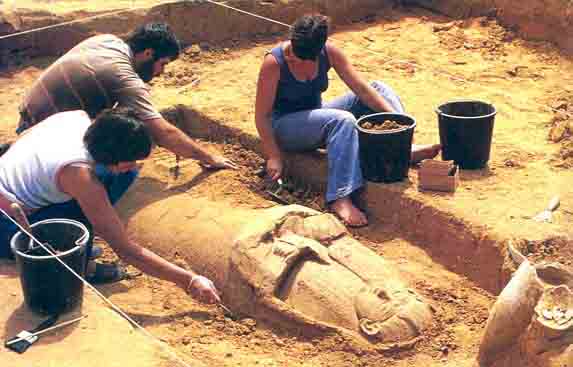Image Details

Zev Radovan
“A moment of awe.” With painstaking work, a coffin emerges from its long burial. Canaanite, Egyptian, Cypriot and Mycenaean ware that probably contained burial goods was found on top of and around the coffin. A Canaanite storage jar, visible in the lower right corner of the photo, marked the head of the coffin, as was the custom. Human-shaped coffins are known mostly from Egypt, where the style originated during the Middle Kingdom (c. 2000–1785 B.C.). However, similar coffins have been excavated at two 12th- and 11th-century B.C. Canaanite sites—Beth-Shean in the Jordan Valley and Tell el-Farah (South) in the Negev. This 13th-century B.C. example from Deir el-Balah has the headdress, elongated eyes and clasped hands characteristic of Egyptian coffins.
